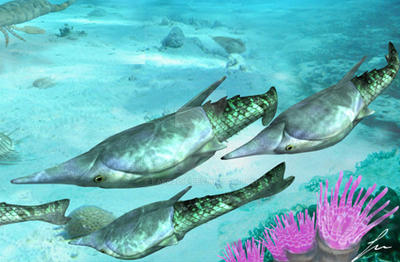
I fell in love with this little critter the first time I saw its picture in a book–Pteraspis, a prehistoric armored fish that supposedly went extinct some 350 million years ago. I don’t think I could’ve been more than five years old.
Pteraspis looks like a dart come to life. British pubs had not yet been invented, so Pteraspis didn’t have to worry about being pressed into service as a projectile. Its armor probably protected it from most predators.
Just a thought: Wait’ll someone finds some soft tissue in one o’ these babies! The fat’ll be in the fire then. Heads will roll, I tell ‘ee….
😂 can’t say I have a favorite prehistoric fish, but you’re right about the soft tissue!
I wouldn’t be surprised if they did find more sof tissue in fossils. The geologic record seems to be at odds with many of the conclusions we were taught in school. The uniformitarian view (the present is the key to the past) is starting to lose adherents, even among atheists and a catastrophic view is becoming more widely accepted.
Bible believing scientists see evidence of a global flood all around us. This gives a far different explanation of the fossil record and removes the need for deep time explanations. Fossilization does not require eons and some fossils, such as vertical tree trunks, could only have been fossilized rapidly. The formation of coal is likewise easily explained by a global flood as are plate tectonics.
Last I heard, they’ve found soft tissue in at least twelve unrelated species of fossilized prehistoric animals. It’s probably more by now.
That is great news. The false edifice seems to be crumbling before our eyes.
They’ve found it in mosasaurs, which were marine lizards that never came onto land. So much for “iron in the soil” preserving soft tissue over tens of millions of years.
I hadn’t heard about that one, but it definitely serves to prove the deep time theory to be fundamentally flawed.
Yeppers.:)
We saw Manatees on our Florida vacation – can’t help but love them.
I’ve never heard of this fish before! My favorite extinct fish is the dunkleosteus.
That was one big, scary fish–not to be encountered in a rowboat.
I would like to see it someday in an aquarium!!
The trick part is, Who’s gonna put it there?
Hmm… good point. That’s gonna be tricky, unless “life finds a way…” – Dr. Ian Malcolm